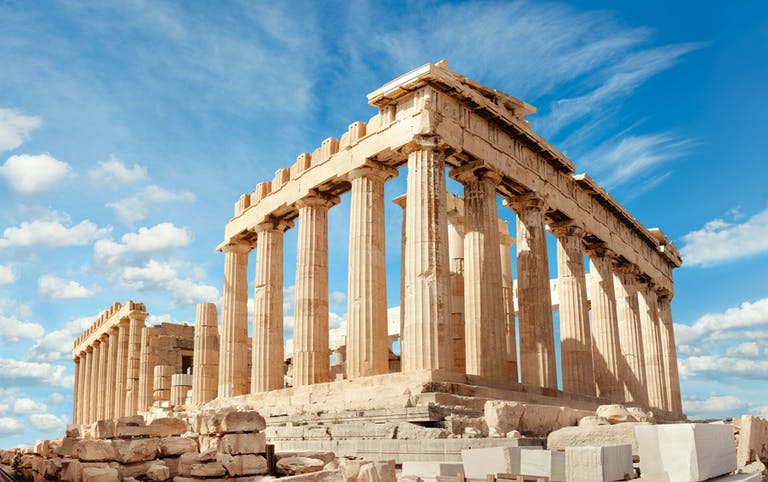In the sweltering heat of a July afternoon in Athens, the Parthenon became the epicenter of a unique protest. Security guards and tourism guides, faced with a scorching heat wave that pushed temperatures to an unprecedented 113 degrees Fahrenheit, chose to make a statement. Their decision to strike shed light not only on the extreme weather conditions impacting both the dedicated workers and the visitors at the Acropolis but also unintentionally brought back to life an age-old tradition – the siesta.
A Cultural Relic Rediscovered
Derived from the Latin phrase sexta hora, signifying the sixth hour after dawn, the siesta is deeply embedded in the fabric of warm Mediterranean cultures like Greece, Spain, and Italy. Dr. Simon Quilty, a physician and researcher at the Australian National University in Canberra, emphasized that the siesta, as old as humanity itself, has been a sensible response to hot weather. However, in the face of modernity, the cultural significance of the siesta has waned, replaced by a growing emphasis on material gain and financial pursuits.
Climate Change and the Siesta’s Unlikely Comeback
The pressing issue of climate change, as a key driver behind record-breaking temperatures, has cast the siesta in a new light. A study conducted by Climate Central revealed that a staggering 98 percent of people on Earth experienced hotter temperatures, likely attributable to climate change, during the hottest summer on record. Even nations renowned for their efficiency, such as Germany, are contemplating the adoption of siestas to prevent heat-related illnesses.
Siesta Across Cultures
While the siesta is an integral part of Spain’s cultural identity, transplanting it into the United States introduces challenges due to differing work schedules and meal times. José María Martín Olalla, a physics professor at the University of Seville in Spain, believes that embracing the siesta in the U.S. could be a meaningful strategy, particularly for outdoor workers, to avoid the most sweltering hours of the day.
A Shield Against Rising Temperatures
As global temperatures are projected to rise further, the potential benefits of siestas become increasingly crucial, especially for those who toil outdoors. Mayra Reiter, the program director of occupational safety and health at Farmworker Justice, advocates for regular rest periods to mitigate the risk of accidents, kidney damage, and heatstroke. Siestas, with their ability to regulate the core body temperature of workers, emerge as a practical and effective solution.
Siesta’s Potential Impact in the United States
In response to the hottest summer on record, U.S. employers are exploring innovative solutions such as ice-filled vests, sweat stickers, and paid cooling breaks to counteract the effects of soaring temperatures on workers. In the agriculture industry, where labor-intensive work is often a necessity, some farmworkers are now opting to harvest crops during the cooler night hours to evade the scorching daytime sun.
Dr. Brenda Jacklitsch, a health scientist and heat expert at the National Institutes for Occupational Safety and Health, supports the integration of siestas into work routines, emphasizing the importance of scheduling strenuous tasks during cooler parts of the day. Construction workers, at particular risk due to their exposure to intense heat, find themselves in a precarious situation. A mother who lost her son to the heat last summer in Texas is now suing his employer for negligence, believing the company could have implemented more safeguards.
Cultural Shifts and Indigenous Wisdom
While the idea of incorporating siestas into the American work culture might seem unconventional, there’s historical precedent. Indigenous traditions in tropical regions have long understood the dangers of extreme heat. Dr. Quilty draws attention to the importance of working with, rather than against, the environment, citing Indigenous practices as a testament to this sensitivity.
One of the co-authors of Quilty’s study is Norman Frank Jurrurla, a Warumungu elder, who emphasizes how traditional Indigenous practices are inherently responsive to the environment. Siesta, he argues, is just one example of these environmentally sensitive practices, complemented by a keen awareness of emerging drought conditions and a willingness to shift to areas with more consistent water sources.
Siesta’s Enduring Relevance
As temperatures continue to rise and the impacts of climate change become increasingly tangible, the revival of the siesta emerges as not just a practical solution but a celebration of cultural heritage. Once dismissed in the pursuit of modernization, the siesta now stands as a tradition that honors the past while offering a shield against the challenges of a warming planet. In the embrace of the siesta, we find not just a break from work but a timeless practice that offers respite and resilience in the face of an ever-changing climate.

